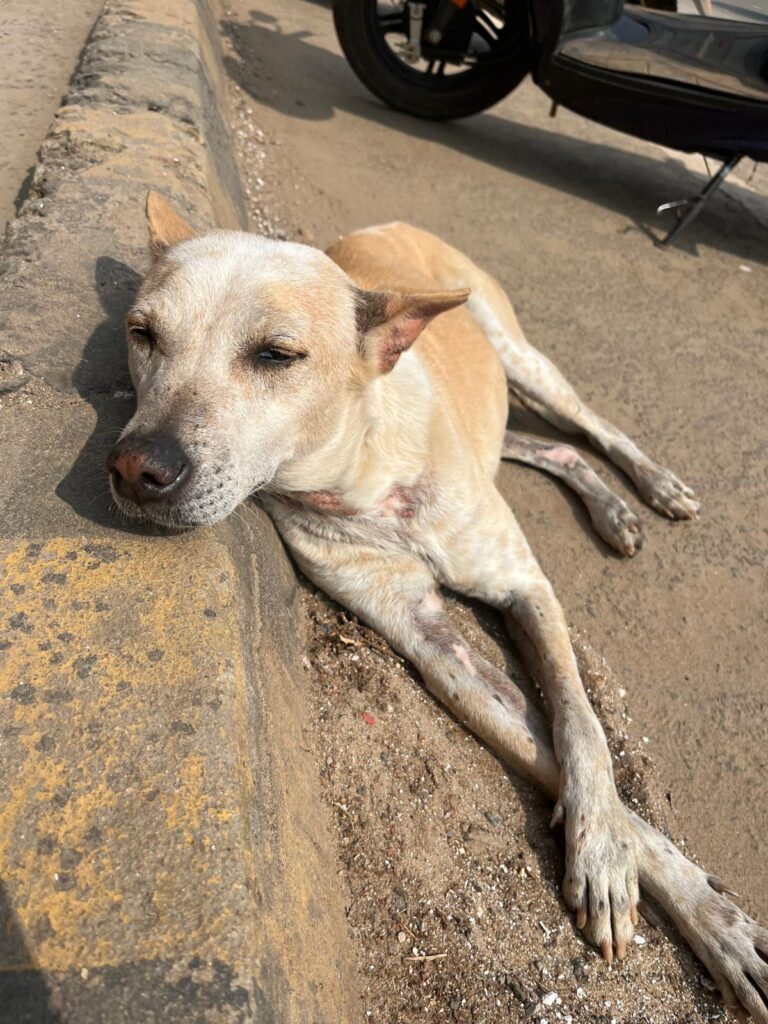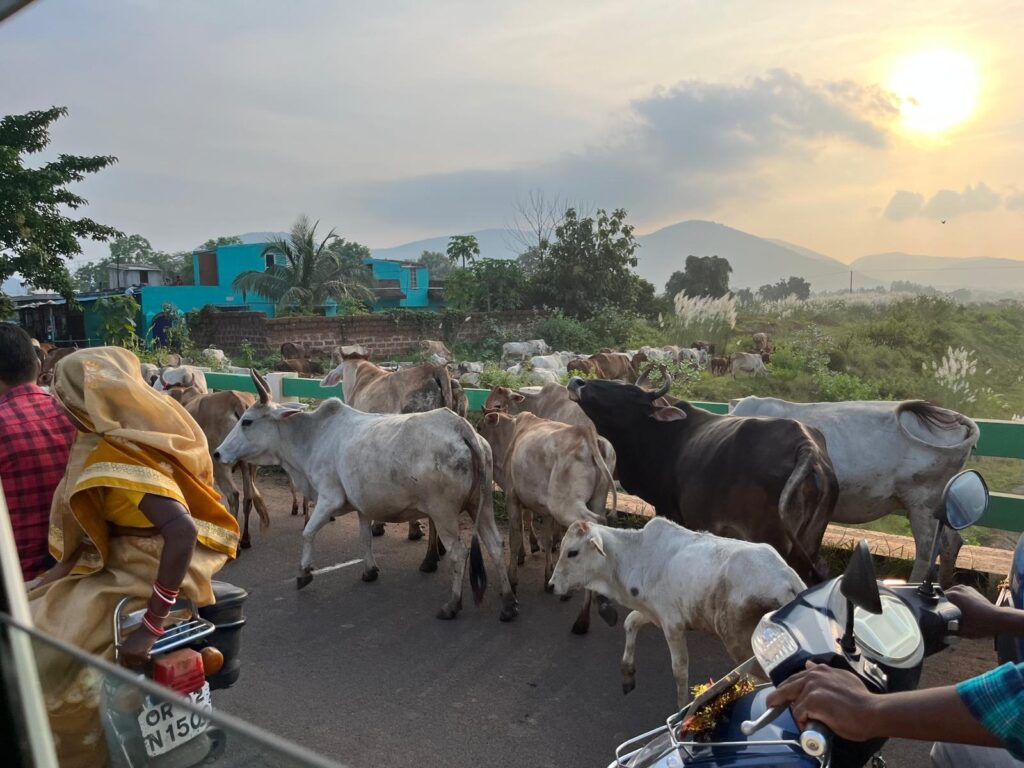By Ms. Lauren MacLeod
The climate crisis compels a review of how policy addresses vulnerability in the context of the COP30 Global Ethical Stocktake (GES), which asks ‘Why do we continue with production and consumption models that harm the most vulnerable and are not aligned with the 1.5ºC Mission’?
The definition of the most vulnerable does not, and should, encompass all animals. The suffering of animals due to climatic events such as extreme heat represents an ecological and moral debt omitted by capitalist economies (Twine, 2020).
Production and consumption models are rooted in anthropocentric bias (Twine, 2020), demand continuous urban expansion and infrastructure development which destroys habitats (e.g. urban wetlands and forests), displaces stray animals (e.g. from parks) and increases urban heat, which negatively impacts all animals, including livestock and working animals (Prajapati, 2025).

Image 1: Urban Dog in Bhubaneswar, Odisha, India. Copyright of Lauren MacLeod
This suffering is an example of non-economic loss and damage that is not recorded by the current loss and damage mechanism, which is inherently anthropogenic, focusing on human-centric, non-economic and economic losses.
Drawing on the case of urban India, where the impact of extreme heat on the life and health of over 20 types of animals, including cows, monkeys, elephants, camels, donkeys, dogs, cats, squirrels (Prajapati, 2025) and snakes (MacLeod et al., 2024) is consistently negative, leading to illness and death.

Image 2: Herd of cows in Ganjam, Odisha, India. Copyright of Lauren MacLeod
This discussion argues that future policy and action must integrate moral and philosophical considerations that advocate for the wellbeing of all animals through proactive efforts in urban areas, such as the provision of hydration, building of shelters, protecting urban wetlands and forests, ensuring wildlife corridors and safe zones and ensuring animal welfare (Prajapati, 2025).
A collective effort is required to ensure urban animals are considered and cared for in the face of increasing extreme heat events.
References
MacLeod, L. Ray-Bennett, N.S. and Arienta, F. (2024) Information,
Education and Communication (IEC) of Snakes and Climate Change. Avoidable Deaths Network, University of Leicester UK. https://www.avoidable-deaths.net/wp-content/uploads/2024/05/English-Information-Education-and-Communication-Of-Snakes-And-Climate-Change-1.pdf
Prajapati, K. (2025) How to Respect the Extreme Heat Resilience of Animals in Urban India?, All India Disaster Mitigation Institute (AIDMI). https://aidmi.org/blog/how-to-respect-the-extreme-heat-resilience-of-animals-in-urban-india
Twine, R. (2020) Where Are the Nonhuman Animals in the Sociology of Climate Change?, Society and Animals, 31: 105-130. doi:10.1163/15685306-bja10025
Authors Short Bio
Ms. Lauren MacLeod is Operations Manager at ADN and Project Manager at Prepared International (PPI). She is an Administrator of the ADN Network on Loss and Damage.
